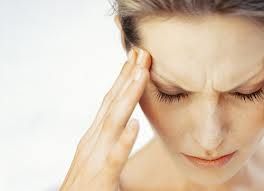This book focuses on the four most common types of chronic headaches: migraine, cluster, tension and chronic daily headaches. The author covers common triggers, proper diagnosis and treatment strategies.
Chapter one addresses the myths about headaches. He present static about regarding the frequency and percent of our population who suffer from the four most comment headaches. The next chapter looks at what causes headaches. The author provides information on the new theory of headaches and what hormones may play in headaches.
Chapter three defines the different types of headaches and lists the symptoms for each. The information in this chapter will assist in developing an awareness of symptoms and how one could communication this to his/her physician. The author examines and identifies the impact of eating, sleep patterns, environmental factors, one's vision, medications, physical exertion, and diet and food as triggers to various types of headaches.
In chapter five the reader will find strategies to assist his/her own physician in making a correction diagnoses; such as a headache diary. He provides information on how to handle the initial doctor's visit; questions you need answers to, the physical examination, and other diagnostic tools. The expected outcome of this chapter is you will learn: the importance of a headache diary; what to do to get ready for your initial visit, what your physical examination may cover and what other diagnostic tools your doctor may use.
Chapter six focus on: how to choose a treatment regime; pros and cons of prescription drugs; effects of antidepressants; techniques for treating specific types of migraine headaches; relieving or stopping a migraine; phenothiazines and no steroidal anti-inflammatory drugs. In this chapter there is information on what role pregnancy, breast-feeding and menopause have on migraines. The author hopes you will learn how to choose and effective treatment, understand prescription drugs for migraines, which techniques are most often used, and how medication therapy may help.
The next chapter examines and identifies coping strategies for cluster headaches. There is information on how to preventing and stop a cluster headache after it has started. The author looks at how effective triptan drugs; dihydroergotamine, sumitriptan, lidocaine and cold showers. You will learn how to prevent and stop cluster headaches.
Chapter eight is focused on how to fight chronic daily headaches. There is information on preventive medications, antidepressants, SSRIs, Beta-blockers, anti-seizure drugs, muscle relaxers, NSAIDs Cox-2 inhibitors and other medication. You will learn to recognize chronic tension headaches, identify episodic tension-type headaches, how to treat and prevent them.
In chapter nine the focus is on treating tension-type headaches. There is a section on episodic tension-type headaches, chronic tension-type headaches, and preventing tension-type headaches. There is information on the role of regular exercise, managing stress, and preventive medications.
In chapter 10 is dedicated to alternative treatments and self-help information such as: oxygen therapy, acupuncture, detoxification therapy, colon therapy, chelation therapy, enemas, fasting, hypothermia, herbal bowel cleansers, environmental medicine, ayurvedic medicine, naturopathy, hypnosis, herbal medicine, energy medicine, imagery, guided imagery, behavioral therapy, light therapy, cold laser therapy, reflexology, neural therapy, chiropractic, osteopathy, psycho/emotional therapies, magnetic field therapy, biofeedback, homeopathic medicine, flower essence therapy, and aromatherapy. The list of self-help treatment include: relaxation exercises, relaxed breathing, deep breathing, three-part breath, 20 cycle breath, Wu breathing exercise, pulse breathing, progressive muscle relaxation, lifestyle changes, self massage, carotid artery massage, neck and shoulder massage, sinus massage, ice and heat, meditation, nutritional therapy and diet, compresses and steams along with tips for reducing food-related headaches. You will learn about the various types of treatments, self-help techniques and alternative strategies to treat and prevent various headaches.
Chapter eleven provides information on using supplements to treat your headaches. The author answer such questions as: what are natural supplements; who takes supplements; and the effects of supplements on cluster headaches, migraines, chronic daily headaches, tension-type headaches, and headaches in general. You will learn about using natural supplement to manage chronic headaches.
Chapter twelve list additional resources and supports such as forums, websites, newsgroups and groups. (Article Source: http://EzineArticles.com/2886730)
 3:04 PM
3:04 PM








0 comments:
Post a Comment